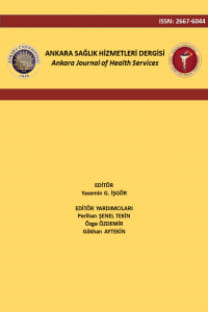Yüksek doz Metilprednizolon’un HL-60 AML hücrelerinde DNA metilasyonu üzerine etkisi
Akut Myeloid Lösemi (AML), erken hematopoetik kök hücrelerde bir dizi genetik değişiklik sonucunda normal büyüme ve farklılaşmanın bozulması, kemik iliği ve periferik kanda çok sayıda anormal olgunlaşmamış myeloid hücrenin birikimi ile karakterize olan bir hastalıktır. Son yıllarda, löseminin oluşum sürecinde DNA metilasyonundaki ve histon modifikasyonlarındaki değişikliklerin etkili olduğu konusunda çalışmalar yapılmış ve AML ve demetile edici ajanlar hematolojik hastalıkların tedavisi için hedef olarak belirlenmiştir. Yüksek doz metilprednizolon yeni tanı almış pediatrik AML hastalarının tedavisinde kısa süreli uygulanmakta ve başarılı sonuçlar alınmaktadır. Sentetik bir glukokortikoid olan metilprednizolonun (MP) yüksek dozda, myeloid lösemi hücrelerinin granülositlere ve makrofajlara farklılaşmasını ve myeloid lösemi hücrelerde apoptozisi indüklediğine dair çalışmalar literatürde bulunmaktadır. Bizim çalışmamızda, AML hücre serisinde metilprednizolonun farklı dozlarda hücreler üzerindeki sitotoksisite düzeylerini saptamak amacıyla MTT yöntemi kullanıldı. MTT testi sonucu canlılığın anlamlı derecede azaldığı dozlarda 24. ve 48. saatlerde apoptozis ve farklılaşma analizleri akım sitometri ile yapıldı. Etken dozun 5x10-3 olarak bulundu ve bu etken dozun uygulandığı HL-60 hücreleri ve kontrol grubu hücrelerinden DNA izolasyonu yapılarak metilasyon analizlerine devam edildi. AML’de sıklıkla metile olduğu bildirilen p15, ER ve anormal ekspresyonu görülen BCL-2 ve CDX2 genlerinin HL-60 AML hücre serisinde steroid tedavisi öncesi ve sonrası metilasyonuna bakılarak, metilprednizolonun etkisini, epigenetik yolaktan gösterip göstermediğini araştırıldı. P15 geni promotoru ve BCL-2 geni promotoru metile bulunmamıştır. ER geni promotoru ve CDX2 geni promotoru ise metile bulunmuştur. MP uygulaması sonrası genlerin metilasyon profillerinde bir değişiklik saptanmamıştır. Çalışmamızda yüksek ve etken dozun hücreleri farklılaşmaya ve apoptozise götürdüğü ancak bunu epigenetik yolak mekanizmalarından biri olan DNA metilasyonu üzerinden yapmadığı saptandı
Anahtar Kelimeler:
Akut Myeloid Lösemi, Metilprednizolon, Metilasyon
Acute Myeloblastic Leukemia (AML) is a disease characterized with disruption of normal hematopoietic growth and differentiation and accumulation of numerous abnormal unmatured myeloid cells. Epigenetic mechanisms, in particular DNA methylation and histon modifications, play a major role in the modulation of gene activity in cancer and cause acute leukemias. Epigenetic changes can reverse pharmacologically with demethylating agents which are in use as targeted therapy of hematological malignancies. Methylprednisolone(MP) has been used with short course and high dose for treating newly diagnosed children with AML. Methylprednisolone induces differentiation of myeloid leukemia cells to granulocytes and macrophages and induces apoptosis of myleoid leukemia cells. First, MTT test is performed for evaluating how different MP doses effect cell cytotoxicity in time dependent manner. Viability decreased with increasing MP doses both 24. And 48. hours. For these doses, apoptosis and differentiation determinations were done with flow cytometry analysis. Following this step, the high and effective dose for HL60 cells established as 5x10-3. For this dose, DNA isolation wass done. After isolation, methylation specific PCR analysis was performed for p15, ER, CDX2 and Bcl-2 genes. According to results, while p15 and Bcl-2 gene promoters are unmethylated, ER and CDX2 gene promoters are methylated. In conclusion, the methylation profiles of p15, CDX2, ER and Bcl-2 do not change after MP treatment.MP has apoptotic effect and differentiates myeloid blast cells but it does not effect DNA methylation. It is the first in the literature that demonstrates if methylprednisolone shows its effect with epigenetic pathway. In conclusion HL-60 cell line shows that MP doesn’t effect DNA methylation
Keywords:
Acute Myeloid Leukemia, Methylprednisolone, Methylation,
___
- ALTUCCI L., CLARKE N., NEBBIOSO A., SCOGNAMIGLIO A., GRONEMEYER H. (2005). Acute myeloid leukemia: Therapeutic Impact Of Epigenetic Drugs. European Journal of Cancer. 37; 1752–1762.
- BLUM W., MARCUCCI G. (2005). Targeting Epigenetic Changes in Acute Myeloid Leukemia. Clinical Advances in Hematology&Oncology. 3; 855- 882.
- EKMEKCI G., GUTIE´RREZ M.I., SIRAJ A.K., OZBEK U., HATIA K. (2004). Aberrant Methylation of Multiple Tumor Supressor Genes in Acute Myeloid Leukemia. American Journal of Hematology. 77; 233– 240.
- MATTERN J., BÜCHLER MARKUS W., HERR I. (2007). Cell Cycle Arrest by Glucocorticoids May Protect Normal Tissue and Solid Tumors from Cancer Therapy, Cancer Biology & Therapy. 6; 1345-1354.
- PAUL T.A., BIES J., SMALL D., WOLFF L. (2010). Signatures of polycomb repression and reduced H3K4 trimethylation are associated with p15INK4b DNA methylation in AML. Blood. 115; 3098-3108.
- SCHOLL C., BANSAL D., DOHNER K., EIWEN K., HUNTLY B. J.P., BENJAMIN H. LEE, RUCKER F.G., RICHARD F. SCHLENK, LARS B., HARTMUT D., D. GARY G., STEFAN F. (2007). The homeobox gene CDX2 is aberrantly expressed in most cases of acute myeloid leukemia and promotes leukemogenesis. The Journal of Clinical Investigation. 117;1037–1048.
- SIONOV R. V., SPOKOINI R., SHLOMIT K. E., COHEN O., YEFENOF E. (2008). Mechanisms Regulating the Susceptibility of Hematopoietic Malignancies to Glucocorticoid Induced Apoptosis. Advanced Cancer. 101; 127-248.
- UZUNOGLU S., USLU R. , TOBU M. , SAYDAM G., TERZİOGLU E., BUYUKKECECİ F., OMAY S.B. (1999). Augmentation of ethylprednisolone-induced differentiation of myeloid leukemia cells by serine:threonine protein phosphatase inhibitors. Leukemia Research. 23;507-512.
- WANG J., LI L.,YU X.,JIA J., CHEN C. (2010). CIP2A is over-expressed in acute myeloid leukaemiaand associated with HL60 cells proliferation and differentiation. INTERNATIONAL JOURNAL OF LABORATORY HEMATOLOG. 33; 290-298.
- YAO J., HUANG Q., ZHANG XIAO-BING, FU WEI-LING. (2009). Promoter CpG methylation of estrogen receptors in leukemia. Biosciece Reports. 29; 211-216.
- Yayın Aralığı: Yılda 2 Sayı
- Başlangıç: 2000
- Yayıncı: Ankara Üniversitesi
Sayıdaki Diğer Makaleler
Gökhan AYTEKİN, Senem TURAN ÖZDEMİR, Pelin EDİZ, Fikret CEYLAN
Türkiye’de çocuk gelişimi alanındaki lisansüstü tezlerin incelenmesi
Neriman ARAL, Ezgi FINDIK TANRIBUYURDU, Aybüke YURTERİ TİRYAKİ, Mehmet SAĞLAM, Burçin AYSU
Yumuşak doku sarkomlarında güncel radyoterapi ve lokal tedavi
Manuchehr Salehi GAREVERAN, Serap AKYÜREK, Esra GÜMÜŞTEPE, Cengiz KURTMAN
Yüksek doz Metilprednizolon’un HL-60 AML hücrelerinde DNA metilasyonu üzerine etkisi
Işıl YÜKSELEN, Asuman SUNGUROĞLU
Gökhan AYTEKİN, Senem TURAN ÖZDEMİR, Pelin EDİZ, Fikret CEYLAN
